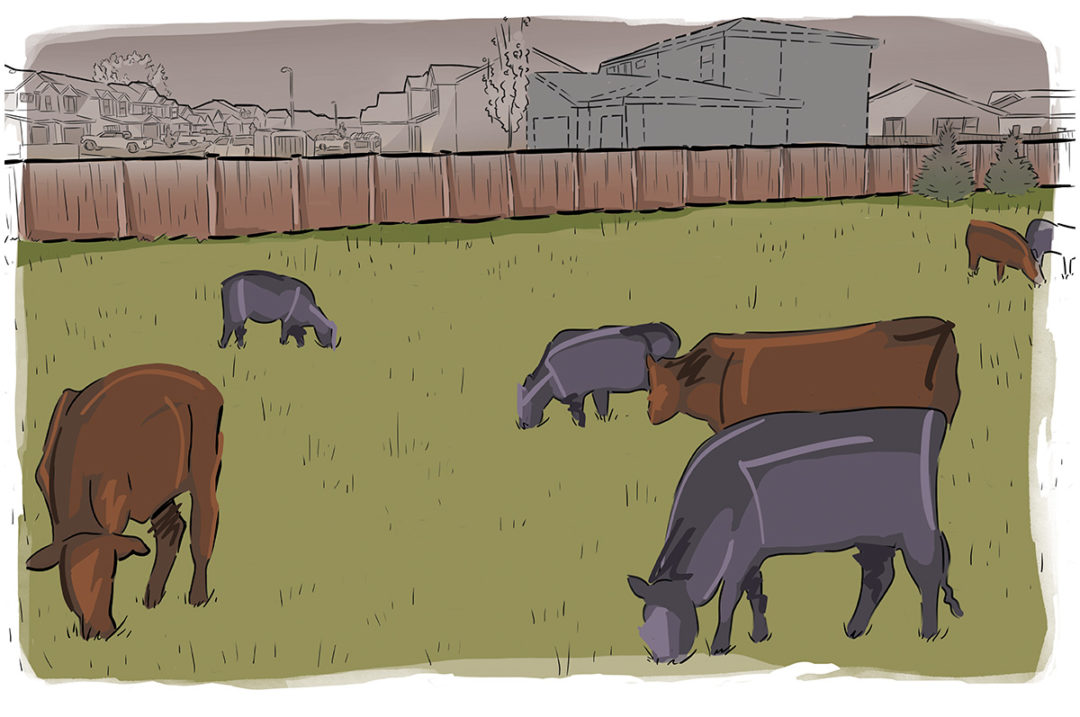As those in production agriculture know, farming and ranching operations do not always smell or look like a bed of roses. However, considering that less than 1% of the U.S. population is involved in raising and growing our nation’s food and fiber, there is a significant disconnect between what is purchased at the grocery store and the sights and odors coming from the day-to-day operations of the farm or ranch that fills those shelves. As urban populations grow into more rural settings, the likelihood of conflict between a new neighbor and an animal feeding or other ag operation is increasing each year.
To protect these farming and ranching operations, all 50 states have enacted “Right to Farm” statutes, which provide important protections for existing agricultural operations against nuisance lawsuits that may be filed by new neighbors who, for example, might complain about the noise or smell coming from a nearby ag operation. While the precise definition of what constitutes a “nuisance” may vary by jurisdiction, the Texas Supreme Court has described a legally actionable nuisance claim to be “a condition that substantially interferes with the use and enjoyment of land by causing unreasonable discomfort or annoyance to a person of ordinary sensibilities.” Barnes v. Mathis, 353 S.W.3d 760, 763 (Tex. 2011). Looking at the Texas Right to Farm statute as an example, it provides that no nuisance claim may be brought against an agricultural operation that has been in operation for one year or more prior to the date of the lawsuit, so long as the conditions complained of have not changed since the established date of operation. Importantly, Right to Farm statutes provide protections against nuisance claims but not other torts such as trespass or negligence or other violations of federal or state law.
Right to Farm statutes recently came into the spotlight around 2015 when multiple high-profile nuisance lawsuits were filed against several Smithfield Foods hog operations located in North Carolina. In those lawsuits, neighboring plaintiffs alleged that the hog farms’ management of waste from the operations degraded their quality of life and reduced their property values. There, the courts held that the North Carolina Right to Farm defense did not apply, and the juries in those suits awarded the plaintiffs over $500 million in damages.
Updates to the law
Concerned with the results of the North Carolina litigation, since 2018, over a dozen states (including North Carolina) have made updates to their Right to Farm laws, attempting to strengthen the protections that these statutes provide. Below is a summary of a few of these key changes.
Attorneys’ fees
To try and deter the filing of nuisance suits brought in bad faith, several states have amended their statutes to include the awarding of mandatory attorneys' fees for the ag operation if the suit is brought in bad faith or is groundless. For example, in 2021, Arizona amended its Right to Farm statute to provide that if the court finds that a party filed a nuisance action not in good faith, not grounded in fact or based on law, or the action was filed for an improper purpose, such as harassment, delay or to increase litigation costs, the court shall award reasonable costs and attorneys’ fees to the other party. Likewise, in 2022, Florida amended its statute to provide that a plaintiff who fails to prevail on a nuisance action based on a farm operation that has existed for a year or more and conforms with generally accepted management practices or state and federal laws is liable to the farm for all costs, fees and expenses incurred in the action.
Property ownership
While neighboring property owners are generally the parties that possess the requisite rights to bring a nuisance action, nationwide environmental action groups have historically used nuisance suits as avenues for attacking agriculture operations. To try and prevent these sorts of actions, several states including Georgia, Virginia and West Virginia have amended their Right to Farm laws to include a standing requirement that predicates a specific ownership of the affected property. For example, in 2019, West Virginia amended its law to require the plaintiff who files the nuisance suit to be the majority legal landowner of the property that is allegedly affected, and that property must be within a half-mile of the agricultural operation.
Limits on certain damages
As was noted above regarding the Smithfield Farms litigation, the damages awarded by the juries were substantial. In response, several states have placed caps on the recovery of punitive damages (or damages that are intended to punish the responsible party). For example, West Virginia has amended its statute to provide that no punitive damages are recoverable, while Arizona requires that a criminal conviction or civil enforcement action be taken in order for punitive damages to be recoverable.
Considering the rapid growth in many rural parts of the country, these Right to Farm statutes will likely continue to play a key role in food security for years to come. If you would like to see the specific language for your state’s Right to Farm laws, the National Agricultural Law Center has a very useful state compilation of these laws that can be accessed at the website.










